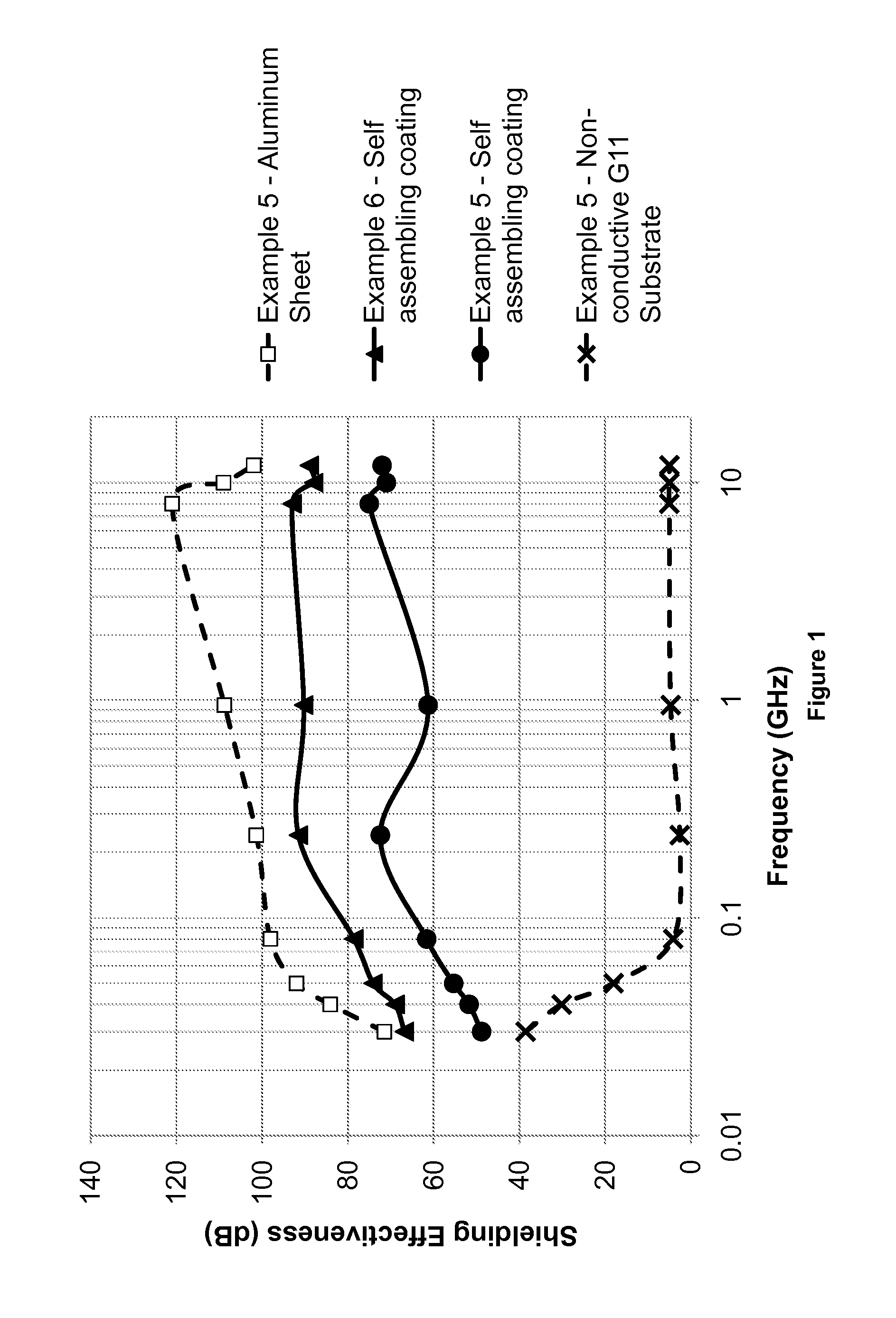Method for shielding a substrate from electromagnetic interference
a technology of electromagnetic interference and shielding material, which is applied in the direction of shielding materials, instruments, non-metal conductors, etc., can solve the problems of low conductivity of current state of the art compositions, achieve high electrical conductivity and electromagnetic shielding effectiveness, improve lightning strike protection and emi shielding properties, and reduce the amount of grounding wires and labor.
- Summary
- Abstract
- Description
- Claims
- Application Information
AI Technical Summary
Benefits of technology
Problems solved by technology
Method used
Image
Examples
example 1
[0085]A conventional conductive particle-filled adhesive not of the present invention was prepared and tested for comparison purposes. The material contained 12.7 wt % DGEBF, 1.5 wt % diethylenetriamine and 85.8 wt % (40% by volume) silver flake type A described prior. The components were mixed until uniform in a Hauschild DAC 150 FV mixer. The material was molded into 40 mil thick disks to mimic a form-in-place gasket or adhesive. The mold was then cured at 160° C. for 1 hour. The resulting material exhibited a typical homogeneous morphology in which the filler was uniformly situated throughout the polymer matrix. The sheet resistance (Ω / square) was too high to be measured by a Keithly 580 multimeter equipped with a Bridge Technology SRM 4 point probe head. The shielding effectiveness (SE) averaged 18 decibels at frequencies of 2.6 GHz to 18 GHz as tested by Method I described prior.
example 2
[0086]A self-assembling adhesive of the present invention was prepared using the following formulation: 27.8 wt % DGEBF, 10.7 wt % amine adduct curative, and 61.5 wt % (15% by volume) silver flake type A. The material was molded, cured and tested according to the procedures in Example 1. The sheet resistance measured less than 0.001 Ω / square and the SE averaged 105 decibels. In comparison to Example 1, the self-assembling adhesive material in this example exhibited far superior SE at a lower concentration of conductive particles.
example 3
[0087]A self-assembling adhesive film of the present invention was prepared using 25.3 wt % DGEBF, 9.7 wt % amine adduct curative, and 65.0 wt % (17% by volume) silver flake type A. The components were mixed until uniform in a Hauschild DAC 150 FV mixer. Using a drawdown bar, a 1.5 mil thick film of the material was cast directly onto a non-conductive substrate of 0.125″ thick G11 epoxy board. The coated substrate was then cured at 160° C. for 1 hour. The sheet resistance of the cured film was 0.05 Ω / square. The SE averaged 72 decibels at frequencies of 8 GHz to 12 GHz as tested by Method I.
PUM
| Property | Measurement | Unit |
|---|---|---|
| shielding effectiveness | aaaaa | aaaaa |
| shielding effectiveness | aaaaa | aaaaa |
| sizes | aaaaa | aaaaa |
Abstract
Description
Claims
Application Information
 Login to View More
Login to View More - R&D
- Intellectual Property
- Life Sciences
- Materials
- Tech Scout
- Unparalleled Data Quality
- Higher Quality Content
- 60% Fewer Hallucinations
Browse by: Latest US Patents, China's latest patents, Technical Efficacy Thesaurus, Application Domain, Technology Topic, Popular Technical Reports.
© 2025 PatSnap. All rights reserved.Legal|Privacy policy|Modern Slavery Act Transparency Statement|Sitemap|About US| Contact US: help@patsnap.com


